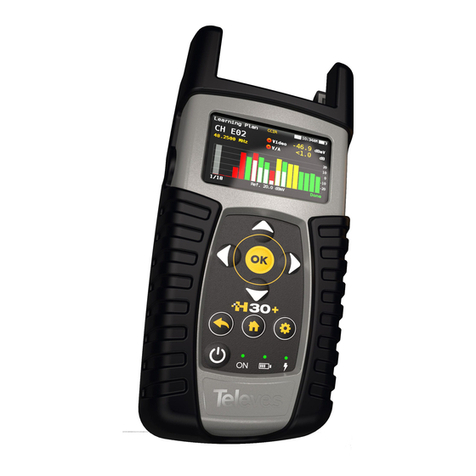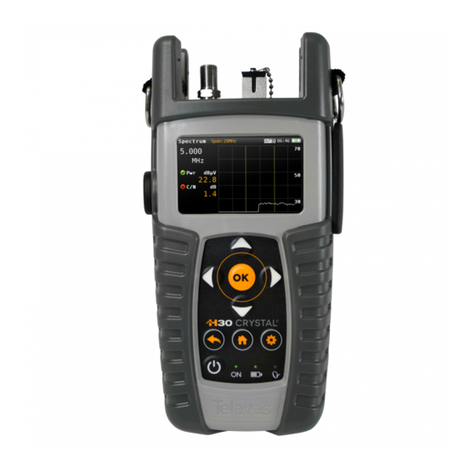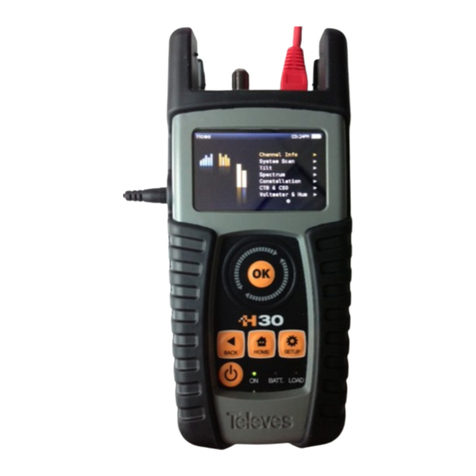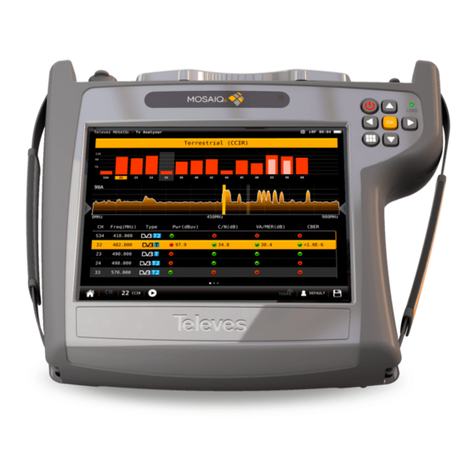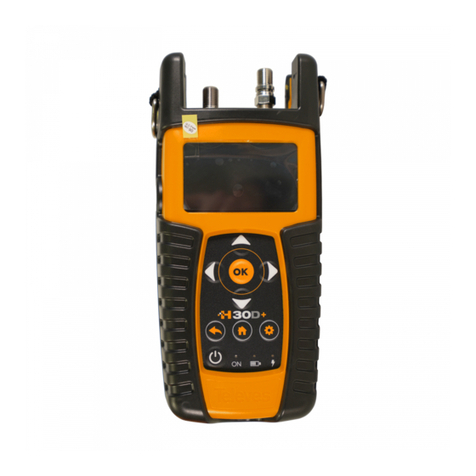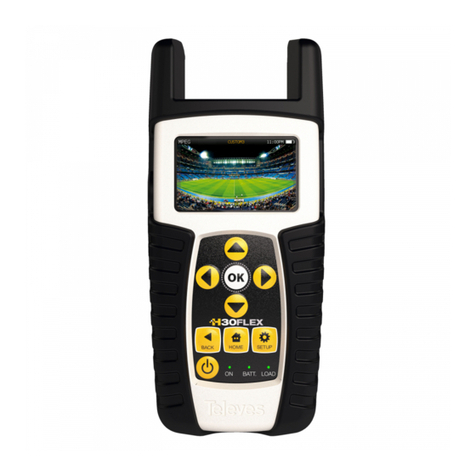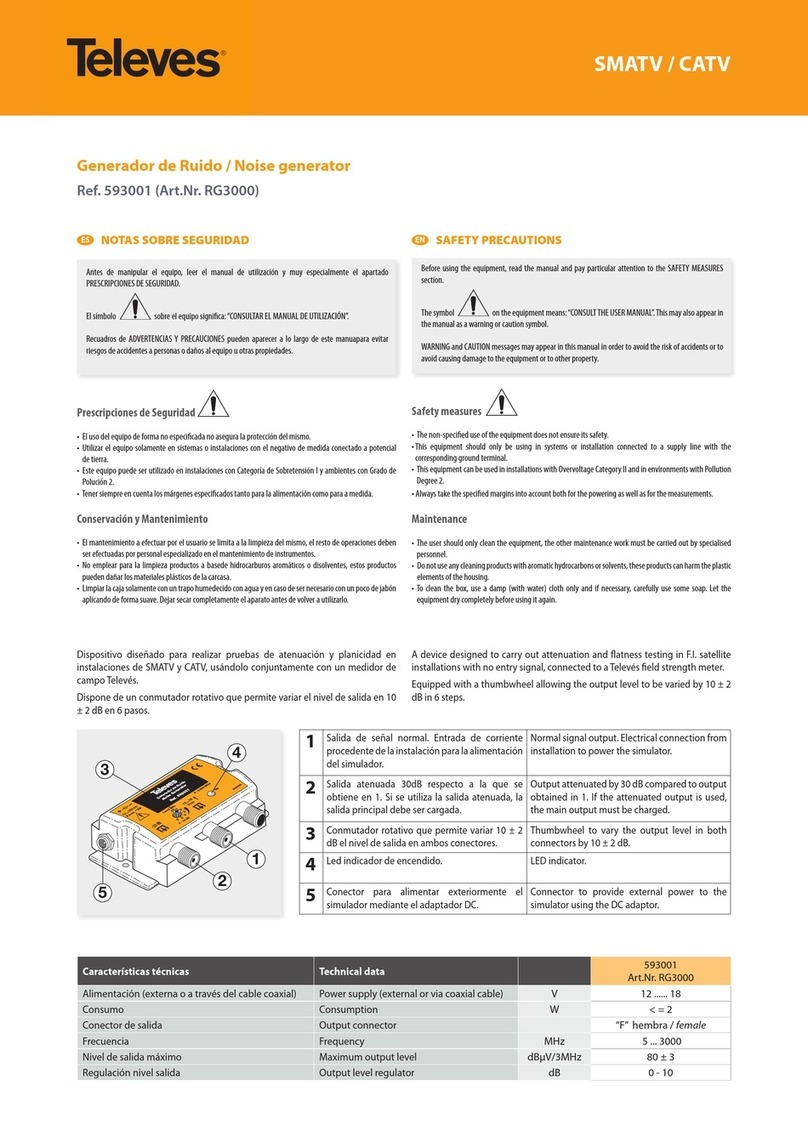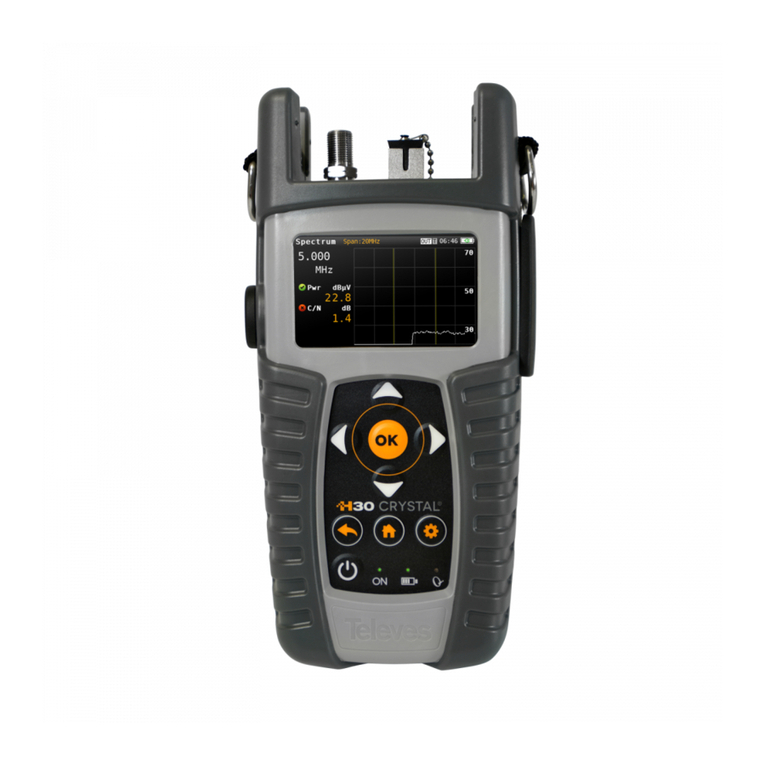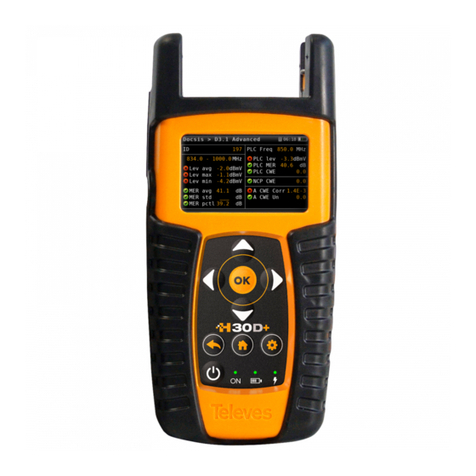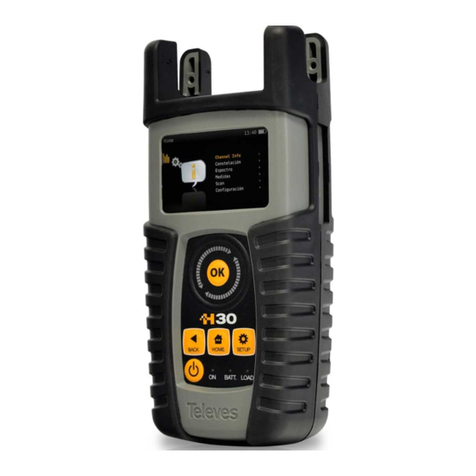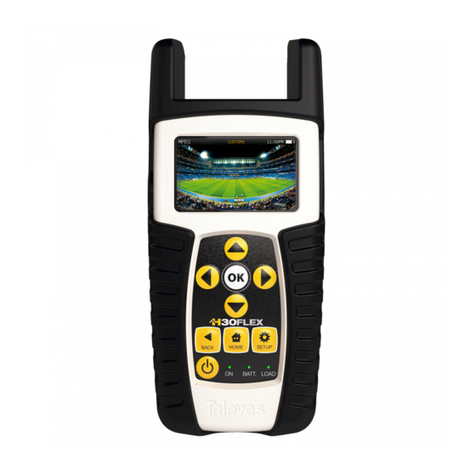105
ENGLISH
TV & SAT Level Meter MTD 120 User Manual
1.- GENERAL
1.1.- Description
The result of uniting long experience in the design of TV signal analysers with the latest in technological progress, the MTD 120 brings
together the functions installers seek most, all in one small,light-weight, portable instrument.
The range of frequencies covered, from 5 to 862 MHz and from 920 to 2150 MHz, makes MTD 120 an excellent instrument for FM radio,
terrestrial TV, cable TV (CATV, 'Community Antenna Television', where the subband tuning margin, from 5 to 45 MHz, enables the user to
carry out tests on the return channel), satellite TV, MMDS microwave links, VSAT ('Very Small Aperture Terminal') systems, digital TV and
intermediate frequency analysis (38.9 MHz). Furthermore, its high resolution frequency, 50 kHz, makes FM measurements much easier.
The MTD 120 includes the main TV standards: M, N, B, G, I, D, K and L, adopting, apart from the characteristic parameters of the
standard, the correcting automatic system to obtain in all the cases an accurate measuring of the input signal level. It admits any TV system
(PAL, SECAM and NTSC) and allows the user to work directly with digital TV signals for which it provides directly the measuring of power
and carrier-to-noise ratio (C/N). Being a multistandard instrument, it can be efficiently used in any country of the world. Its accuracy and
reliability meet the needs of the most demanding users.
A powerful microprocessor automatically handles a large part of the operations necessary to optimise the process of measurement; for
example, continuous frequency synthesis, measurement correction, the appropriate selection of the attenuators and the automatic cut-off after
the device has been inactive for a certain period of time.
The signal level measured is indicated numerically in absolute values and, optionally, on an analogue bar shown superimposed on the
monitor image, that facilitates the detection of the maximum level. Moreover, in the LV sound mode, the loudspeaker emits a tone whose
frequency depends on the level of the signal received, which is very useful when installing antennas. It is also possible to display on screen
the line synchronism pulse like on an oscilloscope screen.
The Spectrum Analyser mode enables all the signals on a band to be viewed on the monitor at the same time to measure analogue
channels level, C/N ratio referenced to a noise frequency defined by the user and digital channels power using an integration method. The
bandwidth of the measuring filter can be modified to improve frequency resolution. This is an indispensable feature, as high channel density is
present on all transmission systems today. Spectrum display can be varied between full span (the entire band) and 8 MHz terrestrial or 32
MHz satellite. In addition, there are two markers in order to locate and list frequencies, to read signal level and frequency difference, and the
level between both.
The selection of sound subcarrier is automatic, depending on the standard, or tunable between 4 and 9 MHz. When decoding TV sound it
is possible to choose between the NARROW and WIDE filter to obtain the best carrier discrimination. It includes a NICAM decoder (with BER
measurement); the possibility to commute the channel that is delivered to the loudspeaker enables the user to check the sound stereo and
dual.
To enhance its convenience of use, it has 99 memories to store the different measuring configurations: name of the configuration,
frequency, TV system, type of measurement, external units powering, units of measurement and sound. Moreover, the DATALOGGER
function permits the acquisition and storage of up to 9801 measures (99 configurations x 99 points of measure) that makes it much easier to
test systems in which a large number of measurements have to be made, and enables further processing of all the information acquired.
Also, the level meter incorporates the teletext function, a DiSEqC command generator and permits to supply different voltages to the
external unit (13 V / 15 V / 18 V / 24 V terrestrial TV, and 13 V / 15 V / 18 V / 13 V + 22 kHz / 15 V + 22 kHz / 18 V + 22 kHz satellite TV).
A SCART connector has been also included with input/output of audio/video.
The MTD 120 is powered by rechargeable batteries or connected to the mains through the supplied external DC power adapter.
It also incorporates a RS-232C interface which enables the user to connect the instrument to a PC for data recording, remote-control of
the instrument and to a printer in order to print out the measurements.
SAFETY NOTES
Read the instruction manual before using the equipment, mainly " SAFETY RULES " paragraph.
The symbol on the equipment means "SEE INSTRUCTION MANUAL".
In this manual may also appear as a Caution or Warning symbol.
Warning and Caution statements may appear in this manual to avoid injury hazard
or damage to this product or other property.
(*)DiSEqC™ is a trademark of EUTELSAT.
